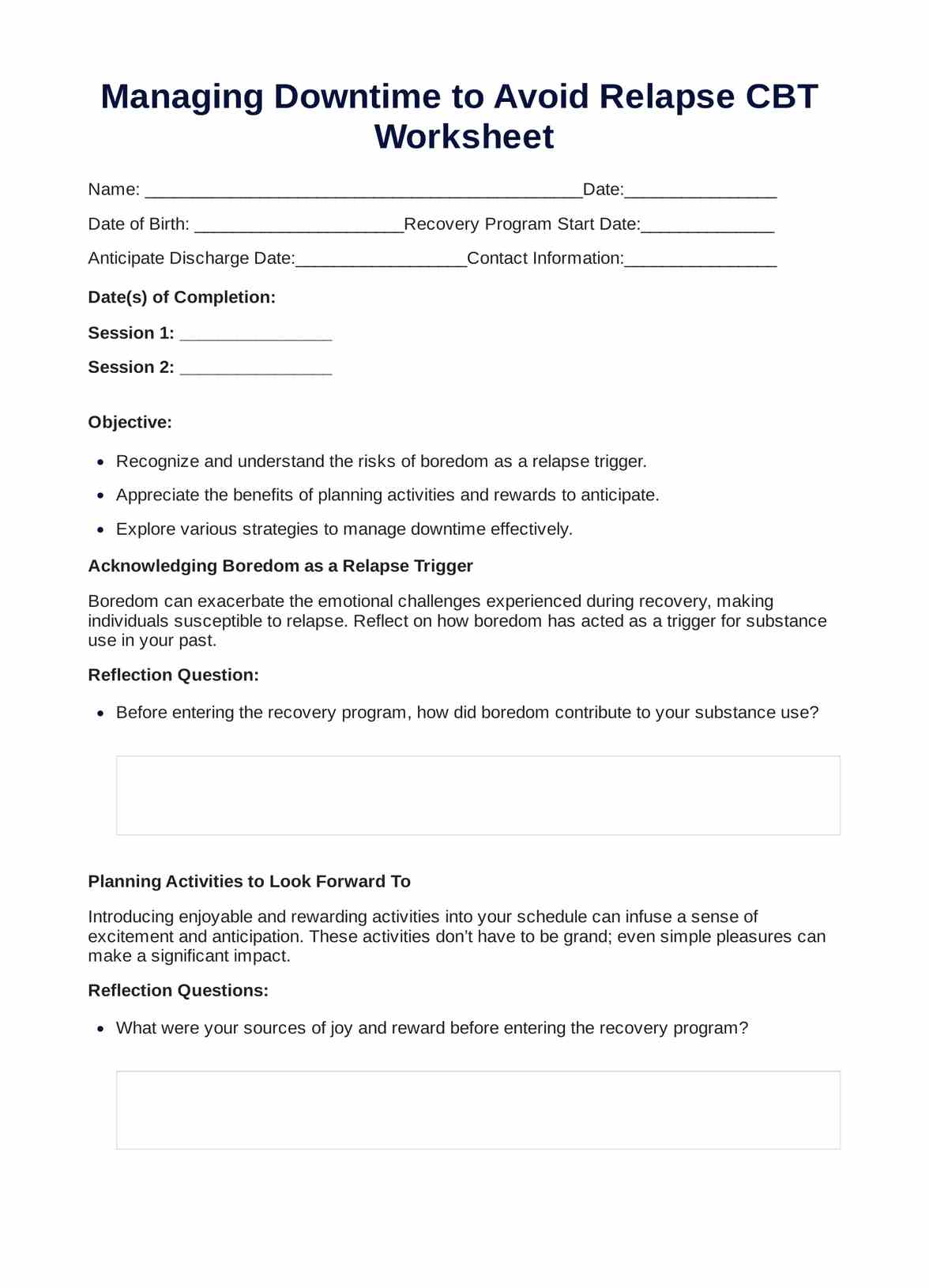The time required will vary depending on the individual, but generally, it should take between 20-30 minutes.

Managing Downtime to Avoid Relapse CBT Worksheet
Use the Managing Downtime to Avoid Relapse CBT Worksheet to navigate recovery. It aids in identifying triggers and planning constructive activities.
Use Template
Managing Downtime to Avoid Relapse CBT Worksheet Template
Commonly asked questions
The worksheet can provide a structured approach to managing downtime and preventing relapse.
This worksheet is most useful during high stress or when experiencing solid cravings.
EHR and practice management software
Get started for free
*No credit card required
Free
$0/usd
Unlimited clients
Telehealth
1GB of storage
Client portal text
Automated billing and online payments











